622 - Root Maggot Control – Battle of the Bulge
Sugarbeet Root Maggot (SBRM) continues to increase its footprint in American Crystal’s growing area.
- 150,000 acres (36%) in 2021 were grown in areas that have moderate to severe SBRM pressure
- Affected acreage has increased at a rate of 11,000 acres/year the last 5 years
- 348 (54%) farms have sugarbeet acres grown in these areas
- 2021 had the highest average fly count/stake to-date
Sugarbeet Root Maggot Severity 2021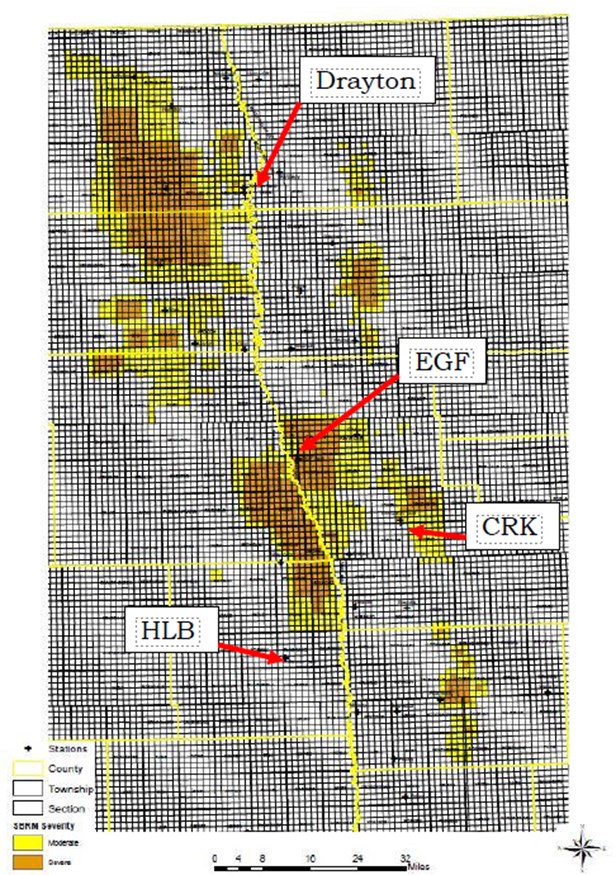
Aggressive control measures are required to control, stop, and hopefully shrink the expanding SBRM footprint.
Unfortunately, this task has become more difficult as chlorpyrifos cannot be used in sugarbeets anymore since the EPA has revoked chlorpyrifos residue tolerances taking this control option away.
Chlorpyrifos is not allowed on the 2022 sugarbeet crop and any applications will be subject to our Misapplied Chemical Policy.
Knocking down SBRM populations is a two-fold process
1. Apply an effective At-Plant insecticide to control the feeding SBRM larvae the flies will lay.
Granular Insecticides (Counter & Thimet) are the standard for control
- The SBRM larvae are next year’s flies, reducing surviving larvae is critical to stop the increase in SBRM populations.
- Counter At-Plant is the base to use in SBRM control.
- Counter can only be applied once/season and has a 90-day PHI
- The best control of SBRM larvae is from granular applied insecticides At-Plant (Counter) as well as POST (Thimet).
- Neonicotinoids (insecticide seed treatments and Midac in-furrow) only provide suppression of SBRM larvae.
- Dr. Boetel’s research does show combining Counter At-Plant with seed treatments or in-furrow insecticide (Midac) increases control as well, but remember, Counter is the base to be used.
Dr. Boetel’s granular insecticide research spanning 2015-2021
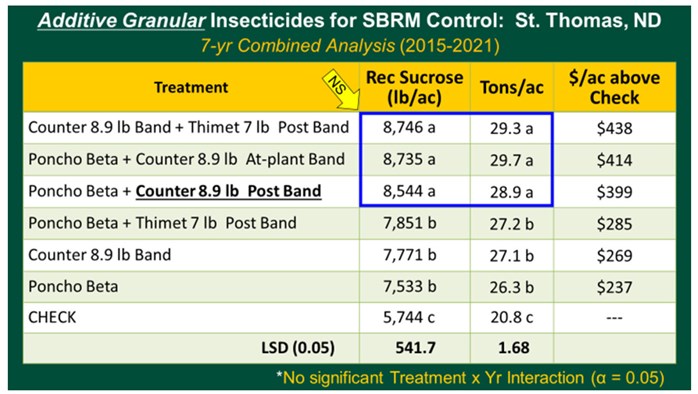
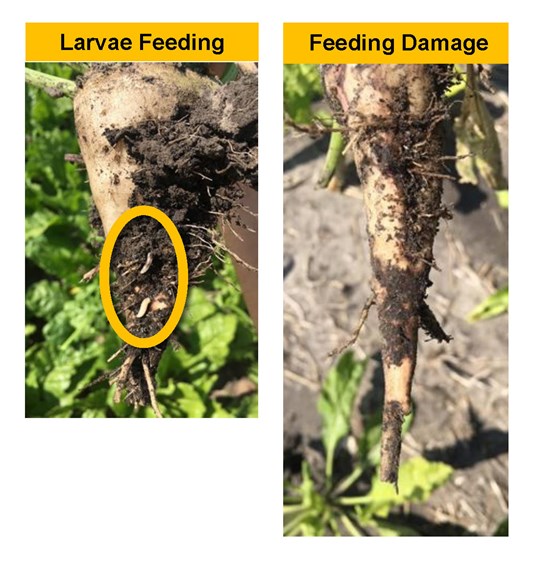
Percent of ACSC acres treated with Counter and average # of SBRM flies/stake (Boetel NDSU)
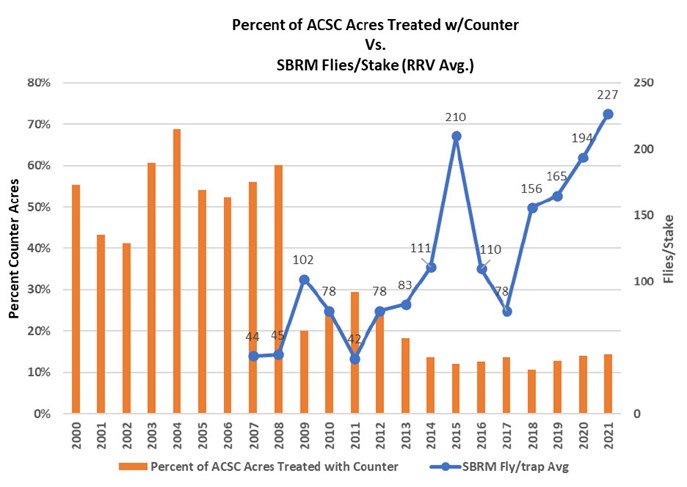
- The graph demonstrates the decrease in acres treated with Counter and the increase in the number of SBRM flies caught (RRV Avg).
- The reduction in acres treated with Counter could very well be fueling this SBRM increase.
- Prior to 2009 Counter was used on roughly 60%of ACSC sugarbeet acres.
- In 2021 Counter was used on only 15% of the planted acres.
- From 2009 to 2021, the average number of SBRM flies caught/stake has increased.
- Fly/stake data was only available back to 2007 from Dr. Boetel using the current method of tracking.
2. Use well-timed effective POST insecticides to knock down the SBRM fly population. This will help to reduce the number of eggs that are laid by flies and resulting population of larvae the At-Plant insecticide must control.
- As fly populations surge, POST insecticides may need to be applied prior to predicted “Peak Fly” at increments of 70-100 flies/stake.
- For unprotected fields without an At-Plant insecticide, insecticide treatment should be at increments of 40-45 flies/stake.
- For unprotected fields without an At-Plant insecticide, insecticide treatment should be at increments of 40-45 flies/stake.
- Even when Thimet is used POST, a POST liquid treatment may be required to knock down the SBRM population if surging or if the Thimet was not activated with moisture.
- With chlorpyrifos tolerances revoked, the POST liquid insecticide options we have available are Mustang Maxx and Asana. They are not as effective as chlorpyrifos was, so additional treatments could be required if SBRM populations rebound.
Dr. Boetel’s research on Dual Apps of Mustang Maxx 2020-21
Note - this is a separate data set (study) than the previous table (pg.2) shown and the two can’t be compared to each other.
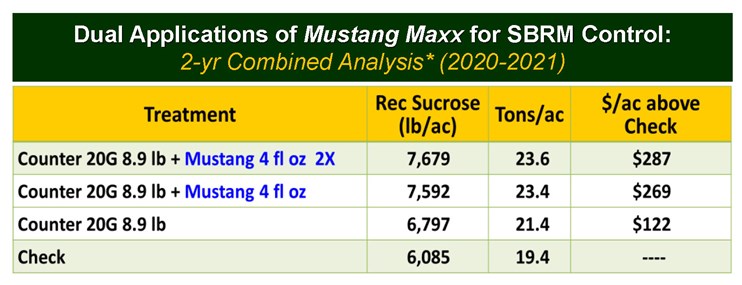
Sugarbeet Root Maggot Resources
- 2022 ACSC SBRM Control quick card
Recommendations for insecticides, rates, and timing - Fly Stake Counts
NDSU and American Crystal Ag Staff take SBRM fly stake counts to monitor fly activity. Monitor your area’s numbers by following the below link. Counts are made every Monday, Wednesday, and Friday during SBRM season. - SBRM Degree Days (DD)
SBRM flies start to show up typically in the last week of May to first week of June. Peak Fly typically occurs at 651 DD. For more information on Degree Days click on the link below:
https://ndawn.ndsu.nodak.edu/help-sugarbeet-root-maggot.html
As always, please contact your Agriculturist with any questions and further refinement.
Important Notice: Please read and follow label directions on all pesticides, this page is not a substitute.
The Crystal Agronomy App is no longer supported.
The NDAWN mobile-friendly site will now be used.
https://ndawn.info/crops.html
The site will have maps for:
- Sugarbeet GDD’s
- Sugarbeet Root DD’s
- Cercospora Daily Infection Values
